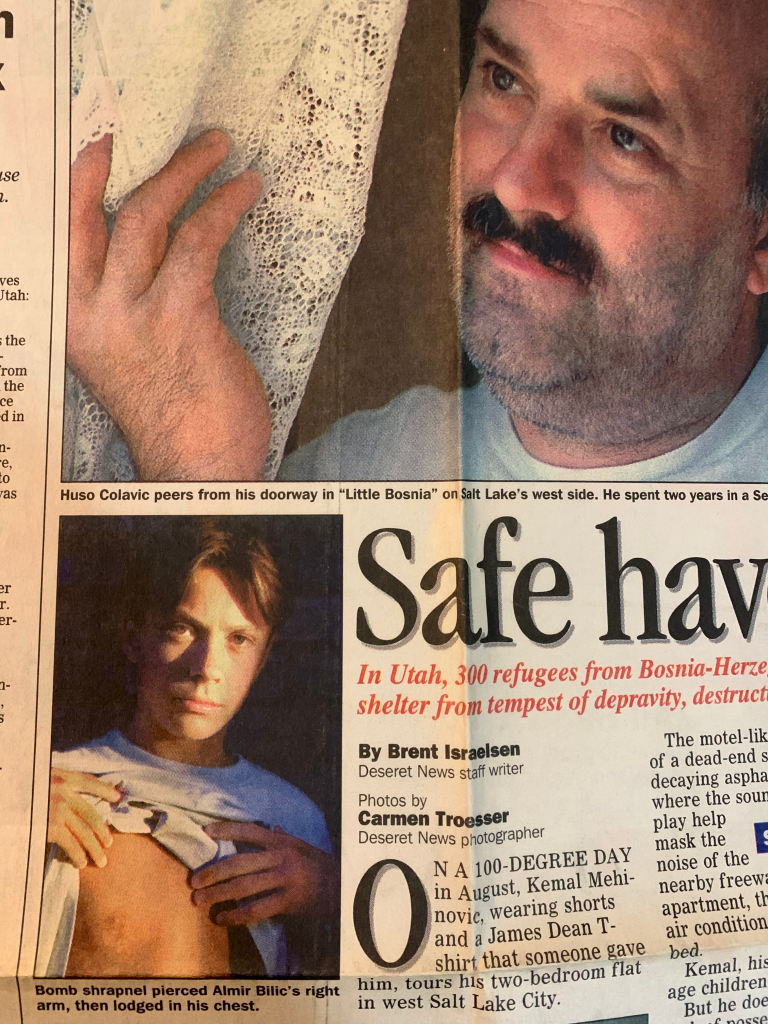I forgive you if you’ve never heard of Miroslav Tadić.
I had never heard of him, either, until he went on trial in The Hague in 2002.
His case before the International Criminal Tribunal for the Former Yugoslavia was part of the 56-count “Šamac Indictment,” which alleged war crimes and crimes against humanity against six Bosnian Serbs for atrocities that occurred in the northern Bosnian town of Bosanski Šamac in the early 1990s.
The defendants engaged in illegal detentions, beatings, torture, forced deportation, and murder – part of a larger campaign that came to be known as “ethnic cleansing” in Bosnia’s horrific 3½-year war.
For his bit part – the unlawful arrest and detention of civilians – Tadić received eight years in prison, though he served just two.
The Šamac indictment was overshadowed by bigger cases following the wars in Bosnia and Kosovo. I never thought I would ever think about it again. Especially not three decades later. Not in Europe.
But here we are, with another criminal war, this time in Ukraine, this time perpetrated by the evil emperor that is Vladimir Putin.
These are among the crimes we are already witnessing in Ukraine:
- Invasion of a sovereign country without provocation
- Deliberate attack on civilian populations
- Willfully causing great suffering
- Extensive destruction of property, not justified by military necessity
- Targeting of hospitals and cultural sites
The counts against Putin, whose list of atrocities now spans more than two decades, is growing by the hour.
Since taking power in 1999, Putin has overseen a scorched-earth crackdown in Chechnya; invaded two sovereign countries, Georgia and Ukraine; massively bombed civilian targets on behalf of a fellow dictator in Syria; maintained an illegal army presence in Moldova; and poisoned dissidents on foreign soil. In his own country, he has presided over the murder of dissidents, as well as the beatings and imprisonment of political opponents, protestors, journalists, and adherents of non-Orthodox faiths.
His regime also bears responsibility for the July 17, 2014, downing of flight MH-17, which killed all 183 passengers on board.
In sheer scale, Putin’s crimes already have surpassed those of former Serbian President Slobodan Milosević, who fomented the wars and ethnic cleansing that terrorized Bosnia and Kosovo. Milosević died in prison while on trial for his crimes.
Putin, who is threatening even more barbaric tactics, is rapidly approaching the same level of war criminality as the indicted Nazi officials, such as Hermann Göring, who commanded the Luftwaffe and ushered in the Holocaust. Göring was sentenced to death at the tribunal in Nuremberg but committed suicide before his execution date.
As was the case with Göring for post-war Europe and with Milosević for post-war former Yugoslavia, bringing Putin – and his henchmen – before a tribunal is vital. Without it, there will be no justice for the victims, no deterrence for other would-be murderous dictators, and little hope of reconciliation between Russia and Ukraine, indeed, between Russia and the free world.
Fortunately, the calls for justice and legal action against the rogue Russian president are becoming louder and more frequent. This week, the International Criminal Court in The Hague announced it would open an investigation, with prosecutor Karim Khan stating: “I am satisfied that there is a reasonable basis to believe that both alleged war crimes and crimes against humanity have been committed in Ukraine since 2014.”
To those who say the prosecution of Putin amounts to pie-in-the-sky thinking, consider the story of Kemal Mehinović, a baker from Šamac, who spent two years in a detention camp, and whose wife and teenage children were forced to flee the country.
During a break in his testimony against Tadić, I interviewed Mehinović and asked him what he thought about Milosević, who was seated at the defense table in another courtroom down the hall.
“I never imagined Milosević would be on trial,” he said. “He was the one who started everything.”
For the sake of humanity, we must all start to imagine Putin sitting in the same chair as Milosević, Göring, and Tadić.











